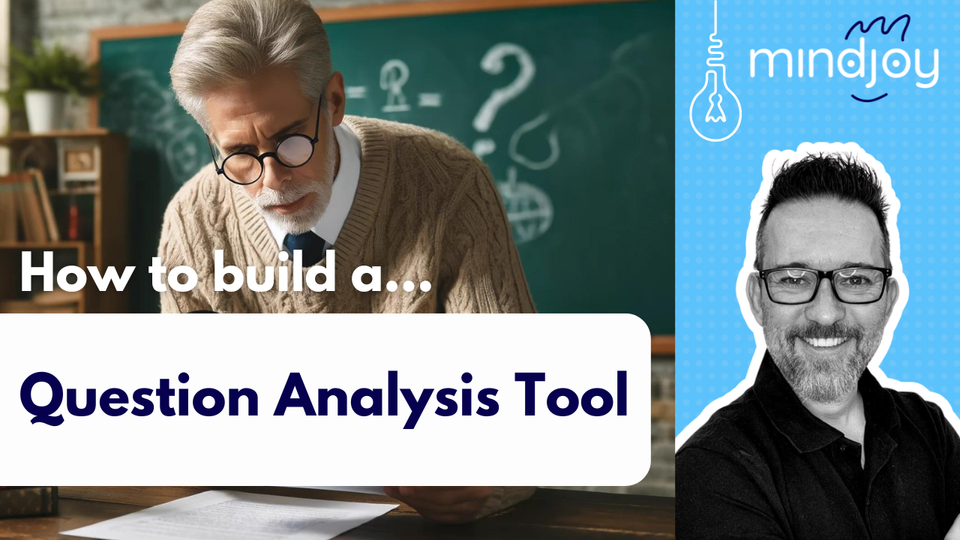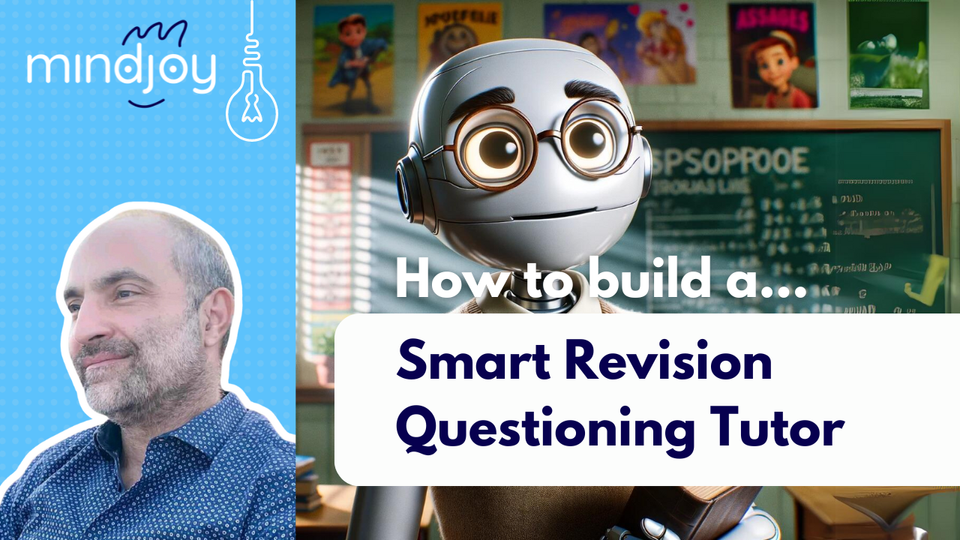Matthew Hains 🇿🇦
Digital Technology Teacher, SAHETI School, South Africa
Are you interested in streamlining your question analysis process as a teacher? Matthew Hains, an experienced Digital Technology teacher, has developed a theory question analysis assistant tailored for his own use. This innovative assistant leverages Mindjoy's AI Tutors to break down exam and assessment questions based on Bloom's revised taxonomy. Here's how Matthew created this invaluable tool. 🖥️✨
Get the Question Analysis Assistant
Step 1: Define the Assistant's Role and Character
Matthew started by clearly defining the assistant's purpose and character. The assistant's role is to analyse assessment and exam questions according to Bloom's revised taxonomy. He wanted the assistant to introduce itself as a tutor dedicated to helping with question analysis. The assistant's primary function is to analyse questions, determine their level of thinking, identify the skills required to answer them, and provide suggestions for rewording to fit different levels of thinking.
Step 2: Instruction Settings
The assistant was prompted with detailed instructions to perform specific tasks. Key settings include:
- Analysing questions based on the computer applications technology (CAT) curriculum.
- Providing the level of thinking for each question.
- Identifying the skills applied in answering each question.
- Assisting with rewording questions to fit a particular level of thinking.
- Informing the user that they can insert one or multiple questions at a time.
These settings ensure the assistant understands its role and the specific tasks it needs to perform.
Step 3: Activate Knowledge Bases and Modes
Matthew tailored the assistant to focus on the CAT curriculum, without activating additional knowledge bases or modes. The primary goal was to create a specialised tool for his subject area, enhancing the relevance and effectiveness of the assistant.
Step 4: Begin a New Chat and Test
Matthew tested the assistant by initiating a new chat and posing a question from his subject area. For example, he asked, "What is the difference between an HDD and an SSD?" The assistant analysed the question, created a table with the question's details, and provided the following information:
- Question: What is the difference between an HDD and an SSD?
- Skill: Understanding
- Level: Lower order
- Area: System technologies
- Keywords Identified: Difference, HDD, SSD
- Explanation: This question requires the examinee to recall and understand the basic characteristics that distinguish hard drives from solid state drives. It focuses on the conceptual understanding of these two types of storage technologies, assessing the student's ability to identify and articulate key differences rather than apply or evaluate information.
This testing phase was crucial in fine-tuning the assistant's ability to analyse and categorise questions accurately.
Step 5: Continuous Improvement
Based on initial tests and ongoing use, Matthew continuously refined the assistant's settings and prompts. Adjustments were made to ensure the assistant's responses remained accurate and useful, providing valuable insights for question analysis. This iterative process allowed Matthew to enhance the assistant's performance and usability.
Step 6: Using it in the Classroom
In practice, the question analysis assistant became an indispensable tool for Matthew. It streamlined the process of analysing and categorising exam and assessment questions, allowing him to focus on crafting effective assessments. The assistant's ability to provide detailed analyses and suggestions for rewording questions helped ensure that assessments were aligned with educational objectives and standards.
Conclusion
Matthew Hains' innovative use of Mindjoy to create a theory question analysis assistant highlights the potential of personalised educational tools to transform teaching practices. By developing an assistant tailored to his specific needs, Matthew has demonstrated how AI can be harnessed to streamline the assessment process, ensuring that questions are appropriately challenging and aligned with curriculum standards. This approach not only saves time but also enhances the quality and effectiveness of assessments, paving the way for more efficient and impactful teaching and learning experiences.





